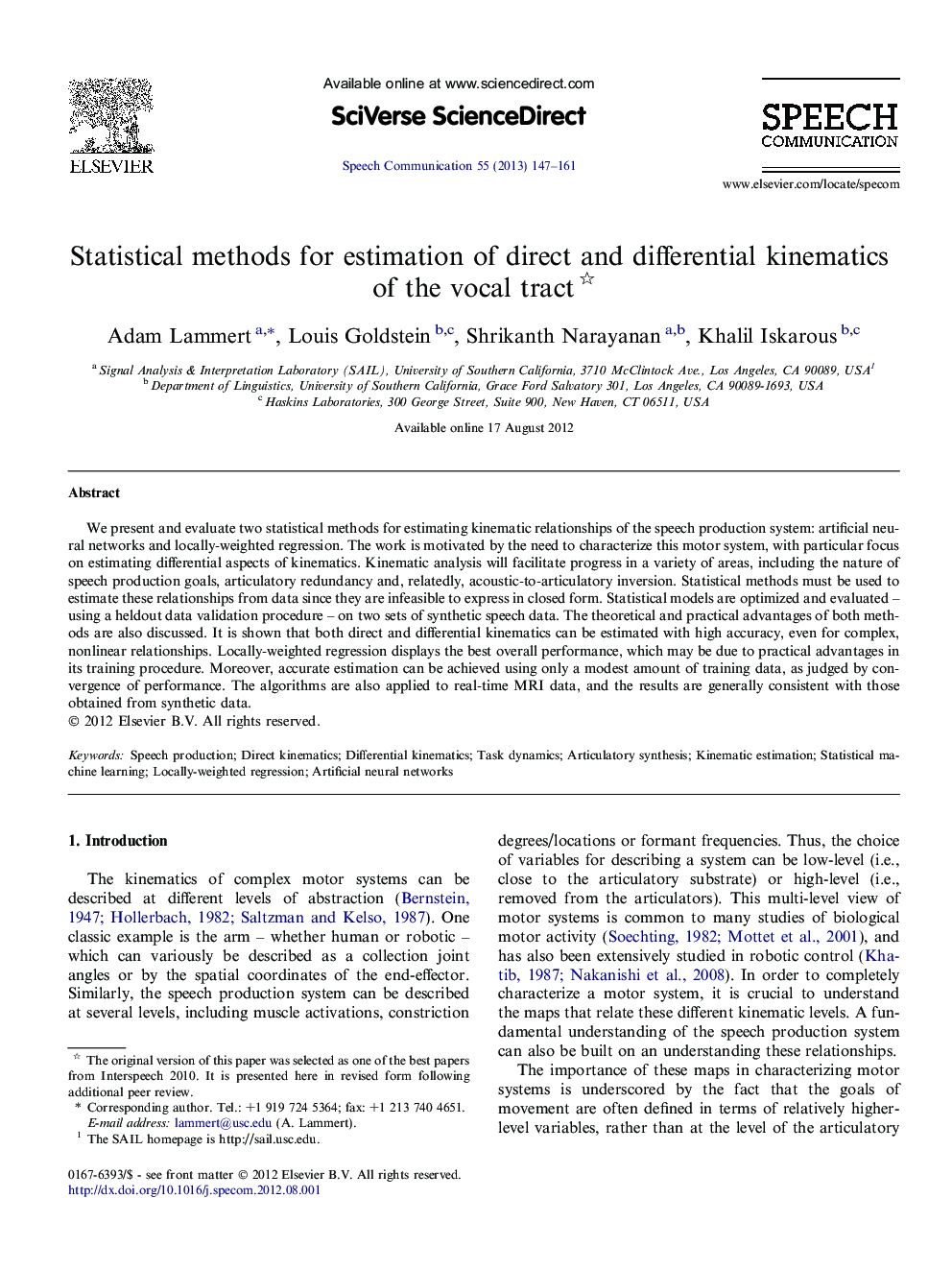| Article ID | Journal | Published Year | Pages | File Type |
|---|---|---|---|---|
| 567343 | Speech Communication | 2013 | 15 Pages |
We present and evaluate two statistical methods for estimating kinematic relationships of the speech production system: artificial neural networks and locally-weighted regression. The work is motivated by the need to characterize this motor system, with particular focus on estimating differential aspects of kinematics. Kinematic analysis will facilitate progress in a variety of areas, including the nature of speech production goals, articulatory redundancy and, relatedly, acoustic-to-articulatory inversion. Statistical methods must be used to estimate these relationships from data since they are infeasible to express in closed form. Statistical models are optimized and evaluated – using a heldout data validation procedure – on two sets of synthetic speech data. The theoretical and practical advantages of both methods are also discussed. It is shown that both direct and differential kinematics can be estimated with high accuracy, even for complex, nonlinear relationships. Locally-weighted regression displays the best overall performance, which may be due to practical advantages in its training procedure. Moreover, accurate estimation can be achieved using only a modest amount of training data, as judged by convergence of performance. The algorithms are also applied to real-time MRI data, and the results are generally consistent with those obtained from synthetic data.
